The 50 Best New Wave Albums
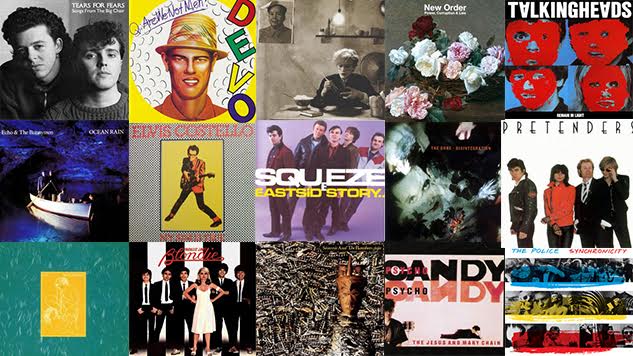
As we look at the best New Wave albums of the ’70s and ’80s, we’re focused both on the early records which overlap with our 50 Best Post-Punk Albums list through the New Romantics, left-of-center power-pop and synth rock of the ’80s. The following albums were collectively chosen by Paste music writers and editors.
New Wave music meant a lot of things in the late 1970s. It encompassed pretty much everything that followed the punk movement that still served as an alternative to mainstream pop and rock. There was power-pop, neo-psychedelia, acid-punk, art rock and lots and lots of keyboards. While “New Wave” and “post-punk” were pretty much interchangeable terms in 1977, by the early ’80s, the more avant-garde, harder-edged bands divided off into post-punk, and New Wave was the realm of synth-driven pop.
“One of the first misconceptions to fall by the wayside will be the notion that new wave/punk rock is raw, offensive, noncommercial music,” wrote Greg Shaw in a 1978 issue of Billboard. “In fact, it’s now widely recognized that the new wave represents a full spectrum of musical styles with the common factor being a fresh, honest approach and a sense of cultural involvement between artists and audience.”
Shaw also noted that “artist-owned labels, once meaningful only as demos or vanities are now commercially viable thanks to new wave marketing systems.”
In many ways, New Wave gave hope to independent bands playing in burgeoning local scenes. The college-radio boom of the ’80s and indie rock of the 21st Century both owe a lot to the New Wave bands on this list.
[Editor’s Note: This list was updated from its original publish in September 2016]
Here are the 50 best New Wave albums of all time:
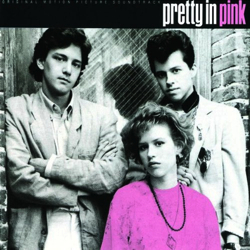 50. Pretty in Pink (1986)John Hughes’ use of music was so distinct and masterful that to this day, lazy music writers can describe something as sounding “like it belongs in a John Hughes movie” and you know exactly what they mean. And out of all his soundtracks, Pretty in Pink is perhaps the John Hughes-iest, full of New Wave classics worthy of its record store-clerk heroine. (The movie even takes its name from the Psychedelic Furs track it opens with.) It’s weird to think that there was a time when people would make out to stuff other than Orchestral Manoeuvres in the Dark’s “If You Leave” at prom, but the band actually wrote the song specifically for the movie. Echo & the Bunnymen did the same thing with “Bring On the Dancing Horses.” The soundtrack manages to fit perfectly with the themes of the movie, the tastes of its characters and the musical era during which it was compiled.—Bonnie Stiernberg
50. Pretty in Pink (1986)John Hughes’ use of music was so distinct and masterful that to this day, lazy music writers can describe something as sounding “like it belongs in a John Hughes movie” and you know exactly what they mean. And out of all his soundtracks, Pretty in Pink is perhaps the John Hughes-iest, full of New Wave classics worthy of its record store-clerk heroine. (The movie even takes its name from the Psychedelic Furs track it opens with.) It’s weird to think that there was a time when people would make out to stuff other than Orchestral Manoeuvres in the Dark’s “If You Leave” at prom, but the band actually wrote the song specifically for the movie. Echo & the Bunnymen did the same thing with “Bring On the Dancing Horses.” The soundtrack manages to fit perfectly with the themes of the movie, the tastes of its characters and the musical era during which it was compiled.—Bonnie Stiernberg
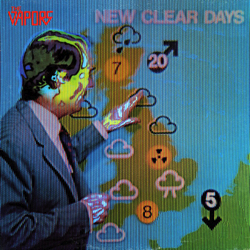 49. The Vapors: New Clear Days (1980)British new wavers The Vapors are often looked at as one-hit wonders with their hit single “Turning Japanese,” a song whose meaning was up for debate upon its release in 1980 when the video was in constant rotation on MTV. But New Clear Days (a pun on “nuclear” days) is a smart, New Wave power-pop record through and through, dripping with satirical lyrics and jagged hooks. Songs like “Letter From Hiro” and the brilliant “Sixty Second Interval” deal with the casualties of war, showing that there was far more to frontman David Fenton’s songs than just a pretty melody.—Mark Lore
49. The Vapors: New Clear Days (1980)British new wavers The Vapors are often looked at as one-hit wonders with their hit single “Turning Japanese,” a song whose meaning was up for debate upon its release in 1980 when the video was in constant rotation on MTV. But New Clear Days (a pun on “nuclear” days) is a smart, New Wave power-pop record through and through, dripping with satirical lyrics and jagged hooks. Songs like “Letter From Hiro” and the brilliant “Sixty Second Interval” deal with the casualties of war, showing that there was far more to frontman David Fenton’s songs than just a pretty melody.—Mark Lore
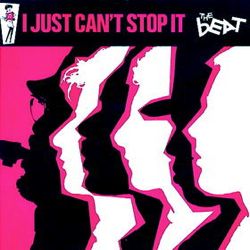 48. The Beat (The English Beat): I Just Can’t Stop It (1980)While many of their 2-Tone Records contemporaries like The Specials and Madness took pains to cover classic ska sides to establish their bona fides, The English Beat took a different tack, embracing easy listening schmaltz with the same fervor as the reggae artists that inspired them. Hence, the group was able to take a 1963 hit by crooner Andy Williams, tease out the romantic sentiments at its core, and turn it into something more slinky and spirited. It helps that the source material was created by the great songwriting team of Doc Pomus and Mort Shuman and that their arrangement is so spare and open that it could be easily adapted for a rocksteady beat and Dave Wakeling’s blue-eyed soul vocalizing. “Mirror in the Bathroom” was the original hit off this record, but “Can’t Get Used to Losing You” would be the true gem released as a single three years later.—Robert Ham
48. The Beat (The English Beat): I Just Can’t Stop It (1980)While many of their 2-Tone Records contemporaries like The Specials and Madness took pains to cover classic ska sides to establish their bona fides, The English Beat took a different tack, embracing easy listening schmaltz with the same fervor as the reggae artists that inspired them. Hence, the group was able to take a 1963 hit by crooner Andy Williams, tease out the romantic sentiments at its core, and turn it into something more slinky and spirited. It helps that the source material was created by the great songwriting team of Doc Pomus and Mort Shuman and that their arrangement is so spare and open that it could be easily adapted for a rocksteady beat and Dave Wakeling’s blue-eyed soul vocalizing. “Mirror in the Bathroom” was the original hit off this record, but “Can’t Get Used to Losing You” would be the true gem released as a single three years later.—Robert Ham
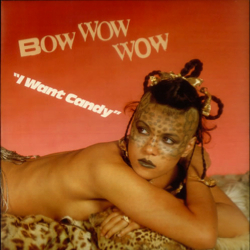 47. Bow Wow Wow: I Want Candy (1982)Bow Wow Wow’s cover of the Strangeloves’ “I Want Candy” still sounds fresh today, with its lively production, surf guitar and tribal drums. It was released as a single and ended up on this compilation along with older songs and a few new ones. Former Sex Pistols manager Malcolm McLaren (he also managed Adam and the Ants) pushed to make teenage vocalist Annabella Lwin the focus during the rise of MTV. It worked, as the video for “I Want Candy” received heavy play. Although the song didn’t push the band to stardom, it does continue to draw ears to Bow Wow Wow’s modest but punchy catalog. And you still hear the influence of songs like “(I’m a) TV Savage” and “Louis Quatorze” on modern indie rock today.—Mark Lore
47. Bow Wow Wow: I Want Candy (1982)Bow Wow Wow’s cover of the Strangeloves’ “I Want Candy” still sounds fresh today, with its lively production, surf guitar and tribal drums. It was released as a single and ended up on this compilation along with older songs and a few new ones. Former Sex Pistols manager Malcolm McLaren (he also managed Adam and the Ants) pushed to make teenage vocalist Annabella Lwin the focus during the rise of MTV. It worked, as the video for “I Want Candy” received heavy play. Although the song didn’t push the band to stardom, it does continue to draw ears to Bow Wow Wow’s modest but punchy catalog. And you still hear the influence of songs like “(I’m a) TV Savage” and “Louis Quatorze” on modern indie rock today.—Mark Lore
 46. Soft Boys: Underwater Moonlight (1980)Today it’s hard to understand how the lightly psychedelic pop-rock of the Soft Boys was ever considered anything close to punk. Frontman Robyn Hitchcock is basically just Elvis Costello without the need to appear at every all-star jam. Underwater Moonlight sounds like the best bar band in the world playing hits from a world that’s better than our own. “I Wanna Destroy You” and “Queen of Eyes,” especially, should be radio staples.—Garrett Martin
46. Soft Boys: Underwater Moonlight (1980)Today it’s hard to understand how the lightly psychedelic pop-rock of the Soft Boys was ever considered anything close to punk. Frontman Robyn Hitchcock is basically just Elvis Costello without the need to appear at every all-star jam. Underwater Moonlight sounds like the best bar band in the world playing hits from a world that’s better than our own. “I Wanna Destroy You” and “Queen of Eyes,” especially, should be radio staples.—Garrett Martin
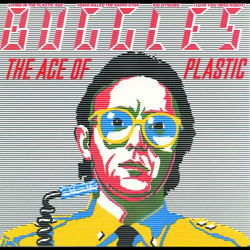 45. Buggles: The Age of Plastic (1980)“Video Killed the Radio Star” ushered in a new era in music when it debuted on MTV at 12:01 a.m., Aug. 1, 1981. And while that international hit may be forever associated with a certain time and place, the rest of The Age of Plastic has aged quite well. Buggles were essentially Trevor Horn and Geoffrey Downes, two geeky British musicians who, like Gary Numan, were disciples of bands like Kraftwerk and were dabbling in their own future sounds in the late-’70s. The Age of Plastic’s New Wave influence was forged less in British punk and more in prog rock (both Horn and Downes would later join prog institution Yes on their Drama record). It makes this record (and, even more so, the band’s second album) stand out more for the musicianship, while never taking itself too serious.—Mark Lore
45. Buggles: The Age of Plastic (1980)“Video Killed the Radio Star” ushered in a new era in music when it debuted on MTV at 12:01 a.m., Aug. 1, 1981. And while that international hit may be forever associated with a certain time and place, the rest of The Age of Plastic has aged quite well. Buggles were essentially Trevor Horn and Geoffrey Downes, two geeky British musicians who, like Gary Numan, were disciples of bands like Kraftwerk and were dabbling in their own future sounds in the late-’70s. The Age of Plastic’s New Wave influence was forged less in British punk and more in prog rock (both Horn and Downes would later join prog institution Yes on their Drama record). It makes this record (and, even more so, the band’s second album) stand out more for the musicianship, while never taking itself too serious.—Mark Lore
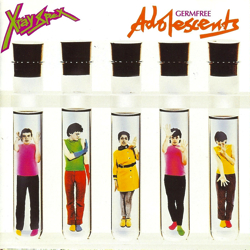 44. X-Ray Spex: Germfree Adolescents (1978)As with some of the best post-punk bands of the era, this punk quintet didn’t survive past the bright blast of their debut album (LP #2 didn’t arrive until 17 years later). Burning out never sounded quite as great as this, though. Honed to a dangerous point by months of live shows, the London-born group tears through a dozen songs with a casual swing but enough jet fuel in their tanks to propel lead singer Poly Styrene and Rudi Thompson’s sax playing to dizzying heights. Poppy enough to feel like candy; weighty enough to leave a deliciously painful knot in your gut after “The Day The World Turned Day-Glo” grinds to a halt.—Robert Ham
44. X-Ray Spex: Germfree Adolescents (1978)As with some of the best post-punk bands of the era, this punk quintet didn’t survive past the bright blast of their debut album (LP #2 didn’t arrive until 17 years later). Burning out never sounded quite as great as this, though. Honed to a dangerous point by months of live shows, the London-born group tears through a dozen songs with a casual swing but enough jet fuel in their tanks to propel lead singer Poly Styrene and Rudi Thompson’s sax playing to dizzying heights. Poppy enough to feel like candy; weighty enough to leave a deliciously painful knot in your gut after “The Day The World Turned Day-Glo” grinds to a halt.—Robert Ham
 43. Adam and the Ants: Kings of the Wild Frontier (1980)Adam and his Ants were perhaps known as much for their look as they were their music. Frontman Adam Ant was hard to miss, a swashbuckling lothario in warpaint and glammed-up colonial garb. In fact, some critics in his home country of England dismissed the band on account of their image. Of course, listening with their eyes proved foolish. Kings of the Wild Frontier refined the sound of the band’s debut Dirk Wears White Socks, introducing Burundi beats and a slicker guitar sound from Marco Pirroni on songs like “Antmusic” and “Dog Eat Dog.” To this day it simply sounds like nothing else.—Mark Lore
43. Adam and the Ants: Kings of the Wild Frontier (1980)Adam and his Ants were perhaps known as much for their look as they were their music. Frontman Adam Ant was hard to miss, a swashbuckling lothario in warpaint and glammed-up colonial garb. In fact, some critics in his home country of England dismissed the band on account of their image. Of course, listening with their eyes proved foolish. Kings of the Wild Frontier refined the sound of the band’s debut Dirk Wears White Socks, introducing Burundi beats and a slicker guitar sound from Marco Pirroni on songs like “Antmusic” and “Dog Eat Dog.” To this day it simply sounds like nothing else.—Mark Lore
 42. Orange Juice: Rip It Up (1982)For most people, Scottish band Orange Juice was a one-hit wonder known for the UK Top 10 song “Rip It Up,” which was one of their most keyboard-driven New Wave-y tunes. But for those who bothered to listen beyond the opening title track, Rip It Up was an overlooked post-punk gem with funk rhythms, angular guitars and catchy melodies. It was New Romanticism with all the softness and glamour removed.—Josh Jackson
42. Orange Juice: Rip It Up (1982)For most people, Scottish band Orange Juice was a one-hit wonder known for the UK Top 10 song “Rip It Up,” which was one of their most keyboard-driven New Wave-y tunes. But for those who bothered to listen beyond the opening title track, Rip It Up was an overlooked post-punk gem with funk rhythms, angular guitars and catchy melodies. It was New Romanticism with all the softness and glamour removed.—Josh Jackson
 41. Waitresses: Wasn’t Tomorrow Wonderful?Hailing from Akron, Ohio, with the likes of Devo and The Pretenders, The Waitresses fused funk and New Wave to great effect. Guitarist Chris Butler wrote the band’s material, but it was late-singer Patty Donahue’s voice and sassy attitude that made the single “I Know What Boys Like” (and the accompanying video) work like a charm. You could hear the sarcasm and confidence in her voice on songs like “Pussy Strut” and the title track, with the always killer line: “What’s a girl to do? Scream and screw?” Donahue deserves credit for keeping the punk and feminist spirit of singers like Patti Smith and Poly Styrene alive and well, and effectively shoving it onto mainstream audiences, even for a fleeting moment.—Mark Lore
41. Waitresses: Wasn’t Tomorrow Wonderful?Hailing from Akron, Ohio, with the likes of Devo and The Pretenders, The Waitresses fused funk and New Wave to great effect. Guitarist Chris Butler wrote the band’s material, but it was late-singer Patty Donahue’s voice and sassy attitude that made the single “I Know What Boys Like” (and the accompanying video) work like a charm. You could hear the sarcasm and confidence in her voice on songs like “Pussy Strut” and the title track, with the always killer line: “What’s a girl to do? Scream and screw?” Donahue deserves credit for keeping the punk and feminist spirit of singers like Patti Smith and Poly Styrene alive and well, and effectively shoving it onto mainstream audiences, even for a fleeting moment.—Mark Lore
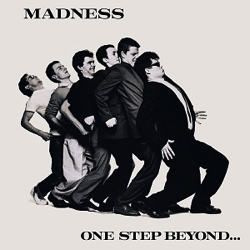 40. Madness: One Step Beyond… (1979)“Hey you, don’t watch that, watch this! This is the heavy heavy monster sound, the nuttiest sound around” So begins the opening track of Madness’ 1979 debut album, immediately reaching out, grabbing you and offering an introduction to the group’s ska-pop. One Step Beyond features a heavy Prince Buster influence, with two Buster covers (the title track and “Madness”) and a tribute to him (“The Prince”), but that “heavy heavy monster sound” it boasts isn’t just a knockoff—it’s a unique statement, a classic moment for the two-tone genre and one that introduced uninitiated pop fans to ska’s second wave.—Bonnie Stiernberg
40. Madness: One Step Beyond… (1979)“Hey you, don’t watch that, watch this! This is the heavy heavy monster sound, the nuttiest sound around” So begins the opening track of Madness’ 1979 debut album, immediately reaching out, grabbing you and offering an introduction to the group’s ska-pop. One Step Beyond features a heavy Prince Buster influence, with two Buster covers (the title track and “Madness”) and a tribute to him (“The Prince”), but that “heavy heavy monster sound” it boasts isn’t just a knockoff—it’s a unique statement, a classic moment for the two-tone genre and one that introduced uninitiated pop fans to ska’s second wave.—Bonnie Stiernberg
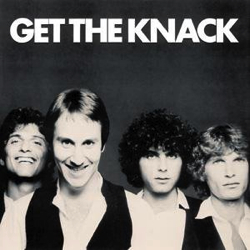 39. The Knack: Get the Knack (1979)In retrospect, it’s easy to demean and even dismiss the Knack’s highly hyped debut, but there’s still a certain guilty pleasure associated with the one-two punch of the album’s mega hit singles, “My Sharona” and its equally compelling follow-up, “Good Girls Don’t.” Built on ricochet rhythms, heavy-handed hooks and leader Doug Feiger’s obvious infatuation with the Beatles (they’d later attempt to emulate the Fabs’ evolution into more adventurous terrain), the band’s sound helped spearhead rock’s resurgence following disco’s demise, a take on pure pop with charmingly devilish designs. A blend of school boy naughtiness and inside humor—offered up with a wink and a nod—their attitude hinted at the fact that they never took things quite as seriously as their critics would believe. So while their record label touted them as The Next Big Thing, their inability to transcend the hype relegated them to a momentary phenomenon that sadly fell out of favor.—Lee Zimmerman
39. The Knack: Get the Knack (1979)In retrospect, it’s easy to demean and even dismiss the Knack’s highly hyped debut, but there’s still a certain guilty pleasure associated with the one-two punch of the album’s mega hit singles, “My Sharona” and its equally compelling follow-up, “Good Girls Don’t.” Built on ricochet rhythms, heavy-handed hooks and leader Doug Feiger’s obvious infatuation with the Beatles (they’d later attempt to emulate the Fabs’ evolution into more adventurous terrain), the band’s sound helped spearhead rock’s resurgence following disco’s demise, a take on pure pop with charmingly devilish designs. A blend of school boy naughtiness and inside humor—offered up with a wink and a nod—their attitude hinted at the fact that they never took things quite as seriously as their critics would believe. So while their record label touted them as The Next Big Thing, their inability to transcend the hype relegated them to a momentary phenomenon that sadly fell out of favor.—Lee Zimmerman
 38. Gary Numan: The Pleasure Principle (1979)Groundbreaking in its use of the Polymoog synthesizer, Gary Numan’s debut, The Pleasure Principle, still sounds like the dystopian future, almost four decades later. Like many New Wave artists of the time, Numan often gets unfairly lumped into one-hit wonder status, as his single “Cars” became a Top 10 hit in the U.S. But there’s nary a bad cut on here. “Metal” and “M.E.” buzz with paranoia as synths swell throughout, and the rock-solid rhythm-section of drummer Cedric Sharpley and bassist Paul Gardiner give the songs a welcome rawness and human element.—Mark Lore
38. Gary Numan: The Pleasure Principle (1979)Groundbreaking in its use of the Polymoog synthesizer, Gary Numan’s debut, The Pleasure Principle, still sounds like the dystopian future, almost four decades later. Like many New Wave artists of the time, Numan often gets unfairly lumped into one-hit wonder status, as his single “Cars” became a Top 10 hit in the U.S. But there’s nary a bad cut on here. “Metal” and “M.E.” buzz with paranoia as synths swell throughout, and the rock-solid rhythm-section of drummer Cedric Sharpley and bassist Paul Gardiner give the songs a welcome rawness and human element.—Mark Lore
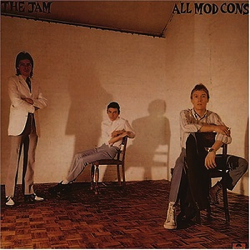 37. The Jam: All Mod Cons (1978)At the tender age of 20, Paul Weller was already burned out. All Mod Cons, the Jam’s third album, was fraught with uncertainty, despite the fact that its young wunderkind was already earning kudos as the once and future Modfather. The album title, an abbreviated take on the familiar slogan, “All the Modern Conveniences,” seemed to both affirm and yet scoff at that suggestion all at once, while a knowing cover of the Kinks’ “David Watts” and the nearly discarded, yet soon to be classic, “Down in the Tube Station at Midnight” solidified the bond between past and present. In time, Weller would transcend his role as a Jam band man and further his standing as “the guvnah,” affirming his standing amongst his heroes-turned-peers Davies and Townshend. For now, however, he was simply content to emulate the legacy of the best Mod gods.—Lee Zimmerman
37. The Jam: All Mod Cons (1978)At the tender age of 20, Paul Weller was already burned out. All Mod Cons, the Jam’s third album, was fraught with uncertainty, despite the fact that its young wunderkind was already earning kudos as the once and future Modfather. The album title, an abbreviated take on the familiar slogan, “All the Modern Conveniences,” seemed to both affirm and yet scoff at that suggestion all at once, while a knowing cover of the Kinks’ “David Watts” and the nearly discarded, yet soon to be classic, “Down in the Tube Station at Midnight” solidified the bond between past and present. In time, Weller would transcend his role as a Jam band man and further his standing as “the guvnah,” affirming his standing amongst his heroes-turned-peers Davies and Townshend. For now, however, he was simply content to emulate the legacy of the best Mod gods.—Lee Zimmerman
 36. Pylon: Gyrate (1980)When Pylon released their debut album, not many outside of Athens, Ga., took notice. But for the art majors and quirky townies in the Classic City, Pylon was the local embodiment of the post-punk scene, proving you didn’t have to be in London or New York to create something special. Droning bass, buzzing guitar and absolutely punishing drums provided the framework for Vanessa Briscoe to scream her way to the edge of insanity. Live, the singer was a spinning firecracker on stage, personifying the album’s title, Gyrate, exploding through songs like “Feast on My Heart” and “Stop It.” R.E.M. ensured the album wouldn’t be lost to history, when drummer Bill Berry proclaimed Pylon the best band in America.—Josh Jackson
36. Pylon: Gyrate (1980)When Pylon released their debut album, not many outside of Athens, Ga., took notice. But for the art majors and quirky townies in the Classic City, Pylon was the local embodiment of the post-punk scene, proving you didn’t have to be in London or New York to create something special. Droning bass, buzzing guitar and absolutely punishing drums provided the framework for Vanessa Briscoe to scream her way to the edge of insanity. Live, the singer was a spinning firecracker on stage, personifying the album’s title, Gyrate, exploding through songs like “Feast on My Heart” and “Stop It.” R.E.M. ensured the album wouldn’t be lost to history, when drummer Bill Berry proclaimed Pylon the best band in America.—Josh Jackson
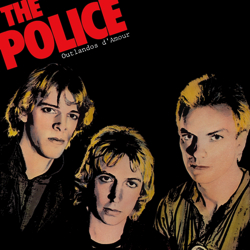 35. The Police: Outlandos d’Amour (1978)I don’t need to tell you about “Roxanne.” If you are a resident of Earth with access to a radio, you’re definitely familiar with Sting and company’s classic ode to the red light district. But The Police’s debut album is so much more than “Roxanne”: “Can’t Stand Losing You” is an undeniable hit in its own right (and rightfully so), those “whoa-oh-oh”s from “Truth Hits Everybody” make comeuppance sound catchy as hell, and while “So Lonely” lifts shamelessly from Bob Marley’s “No Woman, No Cry,” it’s so good you’ll barely mind.—Bonnie Stiernberg
35. The Police: Outlandos d’Amour (1978)I don’t need to tell you about “Roxanne.” If you are a resident of Earth with access to a radio, you’re definitely familiar with Sting and company’s classic ode to the red light district. But The Police’s debut album is so much more than “Roxanne”: “Can’t Stand Losing You” is an undeniable hit in its own right (and rightfully so), those “whoa-oh-oh”s from “Truth Hits Everybody” make comeuppance sound catchy as hell, and while “So Lonely” lifts shamelessly from Bob Marley’s “No Woman, No Cry,” it’s so good you’ll barely mind.—Bonnie Stiernberg
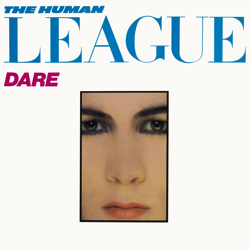 34. The Human League: Dare! (1981)The Human League’s third record sold loads of copies due to the massive success of the single “Don’t You Want Me,” which you simply couldn’t escape in 1982. The band’s music relied heavily on synthesizers, but it was Dare where their more avant proclivities met with pop and even elements of Bowie-esque glam. But not everything on the record is as immediately catchy as “Don’t You Want Me.” “Seconds” is dark and moody and “Do Or Die,” even with its synth hook, is still elegant and nuanced. Dare was a huge hit for The Human League, but it also remains a forward-thinking record that has aged better than most.—Mark Lore
34. The Human League: Dare! (1981)The Human League’s third record sold loads of copies due to the massive success of the single “Don’t You Want Me,” which you simply couldn’t escape in 1982. The band’s music relied heavily on synthesizers, but it was Dare where their more avant proclivities met with pop and even elements of Bowie-esque glam. But not everything on the record is as immediately catchy as “Don’t You Want Me.” “Seconds” is dark and moody and “Do Or Die,” even with its synth hook, is still elegant and nuanced. Dare was a huge hit for The Human League, but it also remains a forward-thinking record that has aged better than most.—Mark Lore
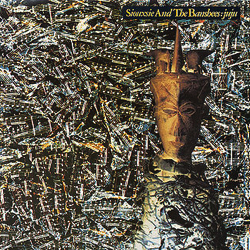 33. Siouxsie and the Banshees: Juju (1981)Siouxsie Sioux started playing music in punk anarchy of the Sex Pistols’ 1970s, but when she invited Magazine guitarist John McGeoch into her band, Goth pioneers Siouxsie and the Banshees helped create a whole new sound. It came together on 1980’s Juju, a dark concept record that ditched electronic sounds for McGeoch’s foreboding guitars. Together with Budgie’s punishing drums and Steven Severin’s frenetic bass, they created the perfect bed for Siouxsie’s lovely, haunting vocals. Who knew black magic could be so beautiful?—Josh Jackson
33. Siouxsie and the Banshees: Juju (1981)Siouxsie Sioux started playing music in punk anarchy of the Sex Pistols’ 1970s, but when she invited Magazine guitarist John McGeoch into her band, Goth pioneers Siouxsie and the Banshees helped create a whole new sound. It came together on 1980’s Juju, a dark concept record that ditched electronic sounds for McGeoch’s foreboding guitars. Together with Budgie’s punishing drums and Steven Severin’s frenetic bass, they created the perfect bed for Siouxsie’s lovely, haunting vocals. Who knew black magic could be so beautiful?—Josh Jackson
 32. Split Enz: True Colours (1980)By the time Split Enz released True Colours in 1980 they’d already established themselves as a colorful and bizarro art rock band in their home country of New Zealand. This record changed all that, both commercially and stylistically. The band’s proggier elements were replaced by more streamlined pop songs that were heavily influenced by early-Beatles and the burgeoning New Wave scene, most notably in songs like “Shark Attack” and the psychedelic synth instrumental “Double Happy.” Young Neil Finn, recruited by his brother Tim for their previous record Frenzy, also upped his songwriting game, most notably on Split Enz’s breakthrough single “I Got You,” which stands as one of the best New Wave pop songs to this day. That earworm found its way onto a new network called MTV one year later, and the video—which showed the band hadn’t completely abandoned all their eccentricities—pushed Split Enz from cult band to chart-toppers in New Zealand and Australia, and MTV staples in the States.—Mark Lore
32. Split Enz: True Colours (1980)By the time Split Enz released True Colours in 1980 they’d already established themselves as a colorful and bizarro art rock band in their home country of New Zealand. This record changed all that, both commercially and stylistically. The band’s proggier elements were replaced by more streamlined pop songs that were heavily influenced by early-Beatles and the burgeoning New Wave scene, most notably in songs like “Shark Attack” and the psychedelic synth instrumental “Double Happy.” Young Neil Finn, recruited by his brother Tim for their previous record Frenzy, also upped his songwriting game, most notably on Split Enz’s breakthrough single “I Got You,” which stands as one of the best New Wave pop songs to this day. That earworm found its way onto a new network called MTV one year later, and the video—which showed the band hadn’t completely abandoned all their eccentricities—pushed Split Enz from cult band to chart-toppers in New Zealand and Australia, and MTV staples in the States.—Mark Lore
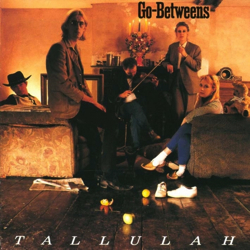 31. The Go-Betweens: Tallulah (1987)Led by their two distinctive—and distinctly different—singer/songwriters, the incurably ironic Robert Forster and the incurably romantic Grant McLennan, Australia’s Go-Betweens were a classic case of a band that was criminally under-appreciated in its time beyond a fiercely loyal cult following. For the uninitiated, Tallulah is a great introduction, featuring several signature works by the group’s chief writers, most notably McLennan’s infectiously chorused shoulda-been-hits “Right Here” and “Bye Bye Pride,” as well as such characteristically edgy Forster compositions as the undertowing “House That Jack Kerouac Built” and “The Clarke Sisters,” a haunting character study of spinsters that perfectly captures its author’s eye for detail. For aficionados, it’s a wonderful opportunity to relive the promise and optimism of the New Wave movement.—Billy Altman
31. The Go-Betweens: Tallulah (1987)Led by their two distinctive—and distinctly different—singer/songwriters, the incurably ironic Robert Forster and the incurably romantic Grant McLennan, Australia’s Go-Betweens were a classic case of a band that was criminally under-appreciated in its time beyond a fiercely loyal cult following. For the uninitiated, Tallulah is a great introduction, featuring several signature works by the group’s chief writers, most notably McLennan’s infectiously chorused shoulda-been-hits “Right Here” and “Bye Bye Pride,” as well as such characteristically edgy Forster compositions as the undertowing “House That Jack Kerouac Built” and “The Clarke Sisters,” a haunting character study of spinsters that perfectly captures its author’s eye for detail. For aficionados, it’s a wonderful opportunity to relive the promise and optimism of the New Wave movement.—Billy Altman
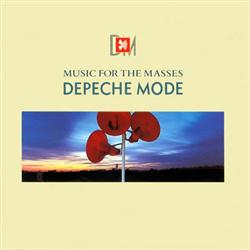 30. Depeche Mode: Music for the Masses (1987)By 1987, the popularity of synthizer-based pop music was waning. What was not waning was the widely held belief that keyboard-based music wasn’t as real as rock ’n’ roll, man. In response, Depeche Mode released Music For The Masses, a collection of songs that were, if anything, far more epic in scope that any American arena band at the time; “Never Let Me Down Again” alone had a towering low-end that could shame anything on Headbanger’s Ball. Though written off as fey-novelty when they debuted with “Just Can’t Get Enough” in 1981, the band kept working. Masses was their sixth album and proof that they had perfected a mix of sulk-worthy, no-one-understands lyrics and sensual groove. The title proved accurate, as Masses was Depeche Mode’s biggest worldwide hit yet; they even shocked their detractors by selling out Los Angeles’s gigantic Pasadena Rose Bowl, a feat very few “real” rock bands were capable of.—Michael Tedder
30. Depeche Mode: Music for the Masses (1987)By 1987, the popularity of synthizer-based pop music was waning. What was not waning was the widely held belief that keyboard-based music wasn’t as real as rock ’n’ roll, man. In response, Depeche Mode released Music For The Masses, a collection of songs that were, if anything, far more epic in scope that any American arena band at the time; “Never Let Me Down Again” alone had a towering low-end that could shame anything on Headbanger’s Ball. Though written off as fey-novelty when they debuted with “Just Can’t Get Enough” in 1981, the band kept working. Masses was their sixth album and proof that they had perfected a mix of sulk-worthy, no-one-understands lyrics and sensual groove. The title proved accurate, as Masses was Depeche Mode’s biggest worldwide hit yet; they even shocked their detractors by selling out Los Angeles’s gigantic Pasadena Rose Bowl, a feat very few “real” rock bands were capable of.—Michael Tedder
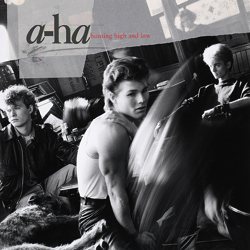 29. a-Ha: Hunting High and Low (1985)Most people recognize the Norwegian band a-Ha for “Take On Me”, the rambunctious first track off of Hunting High and Low. Unless you’re a real New Wave fan, it’s not likely you will recognize the remainder of this album, but it’s layered with both bursts of high energy and heart-wrenching slowburners. Title track “Hunting High and Low” shows lead singer Morten Harket’s vocal range, while “Train of Thought” challenges Men At Work’s “Land Down Under” in a windpipe battle. (It’s a tough decision, but a-Ha wins.) Sondre Lerche may be today’s hot Norwegian artist, but thirty years ago it was all about a-Ha.—Annie Black
29. a-Ha: Hunting High and Low (1985)Most people recognize the Norwegian band a-Ha for “Take On Me”, the rambunctious first track off of Hunting High and Low. Unless you’re a real New Wave fan, it’s not likely you will recognize the remainder of this album, but it’s layered with both bursts of high energy and heart-wrenching slowburners. Title track “Hunting High and Low” shows lead singer Morten Harket’s vocal range, while “Train of Thought” challenges Men At Work’s “Land Down Under” in a windpipe battle. (It’s a tough decision, but a-Ha wins.) Sondre Lerche may be today’s hot Norwegian artist, but thirty years ago it was all about a-Ha.—Annie Black
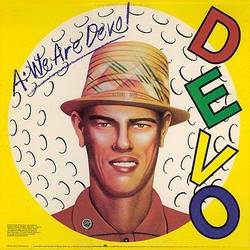 28. Devo: Q: Are We Not Men? A: We Are Devo! (1978)I think I was 16 when I realized Devo wasn’t a jokey one-hit wonder but one of the greatest rock bands of all time. Not that “Whip It” isn’t an amazing song, but it was a little too goofy and ubiquitous for me to take seriously at that very serious age. If I had heard the spastic art rock of Are We Not Men? first I never would’ve doubted them. It’s not their best album, but it’s the best at convincing serious young rock nerds that Devo were more than a silly footnote.—Garrett Martin
28. Devo: Q: Are We Not Men? A: We Are Devo! (1978)I think I was 16 when I realized Devo wasn’t a jokey one-hit wonder but one of the greatest rock bands of all time. Not that “Whip It” isn’t an amazing song, but it was a little too goofy and ubiquitous for me to take seriously at that very serious age. If I had heard the spastic art rock of Are We Not Men? first I never would’ve doubted them. It’s not their best album, but it’s the best at convincing serious young rock nerds that Devo were more than a silly footnote.—Garrett Martin
 27. The B52’s: The B52’sIn a 1980 Rolling Stone interview, conducted mere months before his tragic assassination, John Lennon credited The B-52’s cooky surf-rock classic “Rock Lobster” with sparking his final musical comeback. High praise, but not unwarranted: With their 1979 debut, the Athens, Georgia quintet seemingly arrived on Earth as rock stars from Planet Camp—combining chugging punk guitars, Farfisa organs, Swinging Sixties sci-fi lyrics and the enthralling vocal silliness of singers Fred Schneider, Kate Pierson and Cindy Wilson. The B-52’s remains a lost classic of post-punk/New-Wave, delivering more fun-per-minute than almost any other LP of the past four decades.—Ryan Reed
27. The B52’s: The B52’sIn a 1980 Rolling Stone interview, conducted mere months before his tragic assassination, John Lennon credited The B-52’s cooky surf-rock classic “Rock Lobster” with sparking his final musical comeback. High praise, but not unwarranted: With their 1979 debut, the Athens, Georgia quintet seemingly arrived on Earth as rock stars from Planet Camp—combining chugging punk guitars, Farfisa organs, Swinging Sixties sci-fi lyrics and the enthralling vocal silliness of singers Fred Schneider, Kate Pierson and Cindy Wilson. The B-52’s remains a lost classic of post-punk/New-Wave, delivering more fun-per-minute than almost any other LP of the past four decades.—Ryan Reed
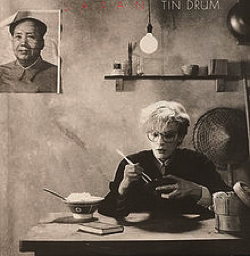 26. Japan: Tin Drum (1981)On Tin Drum, Japan’s fifth and final LP, the British band adds a layer of worldliness to their lush art-pop, immersing themselves in Asian instrumentation (Chinese reed instrument suona) and imagery (“Visions of China”). Following the departure of guitarist Rob Dean, Japan secured more sonic space to indulge their experimental whims—from the digital landscapes of UK hit “Ghost” to the Far East textures of “Canton.” Throughout, David Sylvian’s warbled, post-Bryan Ferry croon slithers around Mick Karn’s purring fretless bass and Richard Barbieri’s textured keys—a combination both soothing and unsettling. —Ryan Reed
26. Japan: Tin Drum (1981)On Tin Drum, Japan’s fifth and final LP, the British band adds a layer of worldliness to their lush art-pop, immersing themselves in Asian instrumentation (Chinese reed instrument suona) and imagery (“Visions of China”). Following the departure of guitarist Rob Dean, Japan secured more sonic space to indulge their experimental whims—from the digital landscapes of UK hit “Ghost” to the Far East textures of “Canton.” Throughout, David Sylvian’s warbled, post-Bryan Ferry croon slithers around Mick Karn’s purring fretless bass and Richard Barbieri’s textured keys—a combination both soothing and unsettling. —Ryan Reed
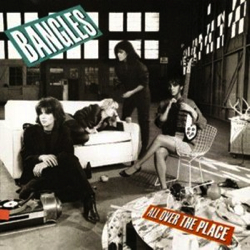 25. The Bangles: All Over the Place (1984)While the Go-Go’s purveyed heaps of charm and innocence, their saccharine sweet sound also positioned them as bubblegum revivalists. The Bangles, on the other hand, had balls—well in a matter of speaking anyway—and they successfully knocked any novelty on its head while demanding to be taken seriously. This, their debut disc, didn’t benefit from having hits—”Manic Monday” and “Walk Like an Egyptian” were still to come—but with songs such as “Hero Takes a Fall” and covers of Katrina and the Waves’ “Going Down to Liverpool” and the obscure Merry-Go-Round tune “Live,” the band was clearly shoring up its reserves in preparation for a big breakthrough that was clearly yet to come. —Lee Zimmerman
25. The Bangles: All Over the Place (1984)While the Go-Go’s purveyed heaps of charm and innocence, their saccharine sweet sound also positioned them as bubblegum revivalists. The Bangles, on the other hand, had balls—well in a matter of speaking anyway—and they successfully knocked any novelty on its head while demanding to be taken seriously. This, their debut disc, didn’t benefit from having hits—”Manic Monday” and “Walk Like an Egyptian” were still to come—but with songs such as “Hero Takes a Fall” and covers of Katrina and the Waves’ “Going Down to Liverpool” and the obscure Merry-Go-Round tune “Live,” the band was clearly shoring up its reserves in preparation for a big breakthrough that was clearly yet to come. —Lee Zimmerman
 24. Duran Duran: Rio (1982)If Duran Duran’s sophomore album had produced just one monster hit single, it probably would’ve still been considered a success, but Rio isn’t just a success—it’s the band’s greatest achievement, a double-platinum record that featured singles like “Rio,” “Hungry Like the Wolf,” “My Own Way” and the epic “Save a Prayer.” It also marks a turning point for the band as they finally were able to break through in the States, where New Romanticism had less appeal than in the UK. That subtle aesthetic shift from New Romanticism to synthpop—coupled with the band’s video success on MTV—made them a smash and helped usher in the Second British Invasion.—Bonnie Stiernberg
24. Duran Duran: Rio (1982)If Duran Duran’s sophomore album had produced just one monster hit single, it probably would’ve still been considered a success, but Rio isn’t just a success—it’s the band’s greatest achievement, a double-platinum record that featured singles like “Rio,” “Hungry Like the Wolf,” “My Own Way” and the epic “Save a Prayer.” It also marks a turning point for the band as they finally were able to break through in the States, where New Romanticism had less appeal than in the UK. That subtle aesthetic shift from New Romanticism to synthpop—coupled with the band’s video success on MTV—made them a smash and helped usher in the Second British Invasion.—Bonnie Stiernberg
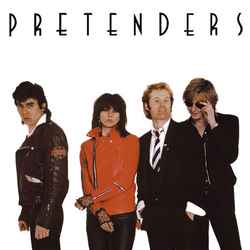 23. The Pretenders: The Pretenders (1980)Coming from a place that was traditionally the territory of male rock stars, Chrissie Hynde was sexy, sultry and totally in control when The Pretenders spat onto the New Wave melee of the late ’70s and early ’80s. Her libidinous lyrics were the fuel for the band’s driving engine of guitars. “Brass in Pocket” remains an infectious classic.—Tim Basham
23. The Pretenders: The Pretenders (1980)Coming from a place that was traditionally the territory of male rock stars, Chrissie Hynde was sexy, sultry and totally in control when The Pretenders spat onto the New Wave melee of the late ’70s and early ’80s. Her libidinous lyrics were the fuel for the band’s driving engine of guitars. “Brass in Pocket” remains an infectious classic.—Tim Basham
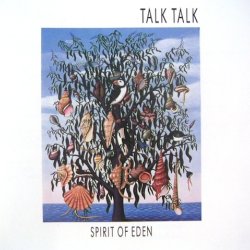 22. Talk Talk: Spirit of Eden (1988)Call it post-rock, call it psych-jazz, call it experimental mumbo-jumbo. Whatever your preferred tag, one thing is clear: In the 20-plus years since its 1988 release, there’s never been another album quite like Talk Talk’s infamous masterpiece, Spirit of Eden. Mark Hollis sings enough just to barely sing, quivering out artful melodic squiggles with his radiant chest-cold tone, slinging spiritual poetry drenched in fog. Beneath is a utopian cavern of sonic heaven—double-bass moans, flickers of muted trumpet, sizzling cymbals, violent clashes of electric guitar.—Ryan Reed
22. Talk Talk: Spirit of Eden (1988)Call it post-rock, call it psych-jazz, call it experimental mumbo-jumbo. Whatever your preferred tag, one thing is clear: In the 20-plus years since its 1988 release, there’s never been another album quite like Talk Talk’s infamous masterpiece, Spirit of Eden. Mark Hollis sings enough just to barely sing, quivering out artful melodic squiggles with his radiant chest-cold tone, slinging spiritual poetry drenched in fog. Beneath is a utopian cavern of sonic heaven—double-bass moans, flickers of muted trumpet, sizzling cymbals, violent clashes of electric guitar.—Ryan Reed
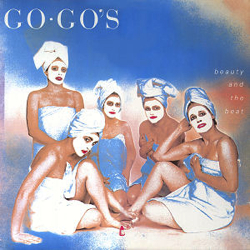 21. The Go-Go’s: Beauty and the Beat (1981)Artists like Best Coast’s Bethany Cosentino, Jenny Lewis and La Sera’s Katy Goodman make the Go-Go’s’ Beauty and the Beat sound surprisingly contempo. The group’s debut album proved not only that they could make a consistent, perky sound that made room for several hit singles, but that they would leave a lasting impression on girl groups everywhere. “We Got The Beat,” “Our Lips Are Sealed” and “How Much More” deliver on the sunny, infectious hooks that make this group so approachable, while “Lust to Love” and “This Town” hit on intricate harmonies and refreshing arrangement..—Annie Black
21. The Go-Go’s: Beauty and the Beat (1981)Artists like Best Coast’s Bethany Cosentino, Jenny Lewis and La Sera’s Katy Goodman make the Go-Go’s’ Beauty and the Beat sound surprisingly contempo. The group’s debut album proved not only that they could make a consistent, perky sound that made room for several hit singles, but that they would leave a lasting impression on girl groups everywhere. “We Got The Beat,” “Our Lips Are Sealed” and “How Much More” deliver on the sunny, infectious hooks that make this group so approachable, while “Lust to Love” and “This Town” hit on intricate harmonies and refreshing arrangement..—Annie Black
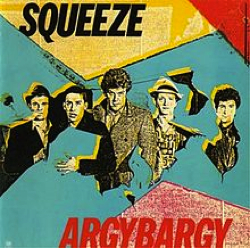 20. Squeeze: Argybargy (1980)Squeeze’s last album with Jools Holland (before their reunion and 1985’s Cosi Fan Tutti Frutti) is also arguably their first truly great one. Argybargy, the group’s third effort, features some of Chris Difford and Glenn Tilbrook’s strongest songwriting. “If I Didn’t Love You” is full of dry wit but still manages to hint at some of the mushy stuff with lines like “singles remind me of kisses/albums remind me of plans.” The eerie “I Think I’m Go Go” paints a manic portrait of touring life, and “Another Nail In My Heart” is one of the catchiest sad songs you’ll ever hear. Clever, infectious, with genuine emotion lying just below the surface—it’s everything a great New Wave record should be.—Bonnie Stiernberg
20. Squeeze: Argybargy (1980)Squeeze’s last album with Jools Holland (before their reunion and 1985’s Cosi Fan Tutti Frutti) is also arguably their first truly great one. Argybargy, the group’s third effort, features some of Chris Difford and Glenn Tilbrook’s strongest songwriting. “If I Didn’t Love You” is full of dry wit but still manages to hint at some of the mushy stuff with lines like “singles remind me of kisses/albums remind me of plans.” The eerie “I Think I’m Go Go” paints a manic portrait of touring life, and “Another Nail In My Heart” is one of the catchiest sad songs you’ll ever hear. Clever, infectious, with genuine emotion lying just below the surface—it’s everything a great New Wave record should be.—Bonnie Stiernberg
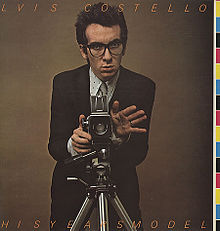 19. Elvis Costello & The Attractions: This Year’s Model (1978) Elvis Costello had already made a splash with My Aim Is True, but the addition of his own band makes an immediate impact, as the rhythm section of Bruce Thomas and Pete Thomas launch right into “No Action,” colored with organ from Steve Nieve, who’d added so much to “Watching the Detectives.” Songs like “Pump It Up” and “Radio, Radio” are as energetic as anything in his catalog. It’s a rock ’n’ roll record that would make Buddy Holly happy to have Costello wearing those glasses.—Josh Jackson
19. Elvis Costello & The Attractions: This Year’s Model (1978) Elvis Costello had already made a splash with My Aim Is True, but the addition of his own band makes an immediate impact, as the rhythm section of Bruce Thomas and Pete Thomas launch right into “No Action,” colored with organ from Steve Nieve, who’d added so much to “Watching the Detectives.” Songs like “Pump It Up” and “Radio, Radio” are as energetic as anything in his catalog. It’s a rock ’n’ roll record that would make Buddy Holly happy to have Costello wearing those glasses.—Josh Jackson
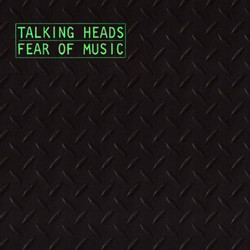 18. Talking Heads: Fear of Music (1979) Fear of Music was leaning out of the ‘70s, dropping in August of 1979. But David Byrne’s premier pop moment in the Talking Heads canon still feels remarkably singular. The pure exotic pleasures of “Paper” and “Cities” brushed right up against the sardonic “Life During Wartime,” but it all feels remarkably kindled, free of that overshadowing density of their most “important” work. We used to call it New Wave, but now it’s just a lovely template.—Luke Winkie
18. Talking Heads: Fear of Music (1979) Fear of Music was leaning out of the ‘70s, dropping in August of 1979. But David Byrne’s premier pop moment in the Talking Heads canon still feels remarkably singular. The pure exotic pleasures of “Paper” and “Cities” brushed right up against the sardonic “Life During Wartime,” but it all feels remarkably kindled, free of that overshadowing density of their most “important” work. We used to call it New Wave, but now it’s just a lovely template.—Luke Winkie
 17. Joe Jackson: Look Sharp! (1979)The debut from Joe Jackson ranks right up there with early records from another brainy, pissed-off songwriter called Elvis Costello, bursting with frustration and spazzy pop songs. Look Sharp! spawned the timeless hit “Is She Really Going Out With Him?”, but songs like “One More Time” and “Happy Loving Couples” that reveal the more caustic side of Jackson’s songwriting, of which he wouldn’t quite tap into again. And although the band takes its namesake from its frontman, the rhythm-section of bassist Graham Maby and drummer David Houghton, and the shard-spitting guitar work of Gary Sanford, should not be overlooked.—Mark Lore
17. Joe Jackson: Look Sharp! (1979)The debut from Joe Jackson ranks right up there with early records from another brainy, pissed-off songwriter called Elvis Costello, bursting with frustration and spazzy pop songs. Look Sharp! spawned the timeless hit “Is She Really Going Out With Him?”, but songs like “One More Time” and “Happy Loving Couples” that reveal the more caustic side of Jackson’s songwriting, of which he wouldn’t quite tap into again. And although the band takes its namesake from its frontman, the rhythm-section of bassist Graham Maby and drummer David Houghton, and the shard-spitting guitar work of Gary Sanford, should not be overlooked.—Mark Lore
 16. Tears For Fears: Songs From the Big Chair (1985)Time hasn’t been kind to the earnest pop of the mid ’80s. As synthetic sounds came to dominate the airwaves, producers all toyed with the same tricks, giving songs a shorter shelf life. But get past the pink Polos, pained expressions and punchy drum sounds of Tears For Fears’ Songs From the Big Chair and you’ll find an epic album that replaced the band’s synth-pop with some jangly guitars and a more mature sound. Packed with hits like “Everybody Wants To Rule the World,” “Shout,” “Mothers Talk” and “Head Over Heels,” it’s 1985 in a nutshell.—Josh Jackson
16. Tears For Fears: Songs From the Big Chair (1985)Time hasn’t been kind to the earnest pop of the mid ’80s. As synthetic sounds came to dominate the airwaves, producers all toyed with the same tricks, giving songs a shorter shelf life. But get past the pink Polos, pained expressions and punchy drum sounds of Tears For Fears’ Songs From the Big Chair and you’ll find an epic album that replaced the band’s synth-pop with some jangly guitars and a more mature sound. Packed with hits like “Everybody Wants To Rule the World,” “Shout,” “Mothers Talk” and “Head Over Heels,” it’s 1985 in a nutshell.—Josh Jackson
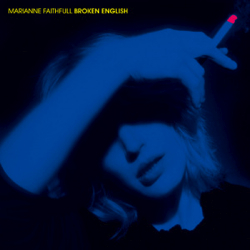 15. Marianne Faithfull: Broken English (1979)The daughter of an Austrian baroness, this swinging London socialite was first discovered by Rolling Stones Svengali Andrew Loog Oldham, who provided her first Mick Jagger/Keith Richards-penned hit “As Tears Go By” in 1964. After flirtations with film, drugs and even Jagger himself, Faithfull disappeared for a decade, reinventing herself as a smoky-throated chanteuse on 1979’s New Wave gem, Broken English. It’s a mix of punk and rock and balladry with generous amount so synthesizers from Steve Winwood, but it’s Faithfull’s smoky, cracked voice singing vulnerable songs about sex and heartbreak that led to a Grammy nomination and critical acclaim.—Tom Lanham
15. Marianne Faithfull: Broken English (1979)The daughter of an Austrian baroness, this swinging London socialite was first discovered by Rolling Stones Svengali Andrew Loog Oldham, who provided her first Mick Jagger/Keith Richards-penned hit “As Tears Go By” in 1964. After flirtations with film, drugs and even Jagger himself, Faithfull disappeared for a decade, reinventing herself as a smoky-throated chanteuse on 1979’s New Wave gem, Broken English. It’s a mix of punk and rock and balladry with generous amount so synthesizers from Steve Winwood, but it’s Faithfull’s smoky, cracked voice singing vulnerable songs about sex and heartbreak that led to a Grammy nomination and critical acclaim.—Tom Lanham

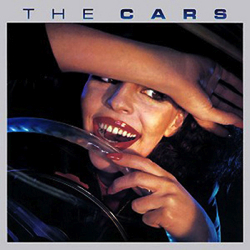 13. The Cars: The Cars (1978)“I think the Cars did it right… Charles and I really like the Cars. That’s where we got our chugging sound.” That unlikely nod from Pixies guitarist Joey Santiago suggests that despite their slick, mainstream sound, the Cars were actually firing on all cylinders when they made their bow via this eponymous debut. Theirs was a pop perfect sound, so utterly infectious, it didn’t matter how many times “My Best Friend’s Girl” or “Good Times Roll” snuck up on the airwaves, the songs still sounded as exuberant and infectious as they did each time before. Taking their cue from the Velvet Underground, Roxy Music and an unapologetic love for pristine pop, the Cars’ meticulous approach merged New Wave with Old Wave and set a new high standard in the process. As irresistible ear candy, it’s still hard to beat. —Lee Zimmerman
13. The Cars: The Cars (1978)“I think the Cars did it right… Charles and I really like the Cars. That’s where we got our chugging sound.” That unlikely nod from Pixies guitarist Joey Santiago suggests that despite their slick, mainstream sound, the Cars were actually firing on all cylinders when they made their bow via this eponymous debut. Theirs was a pop perfect sound, so utterly infectious, it didn’t matter how many times “My Best Friend’s Girl” or “Good Times Roll” snuck up on the airwaves, the songs still sounded as exuberant and infectious as they did each time before. Taking their cue from the Velvet Underground, Roxy Music and an unapologetic love for pristine pop, the Cars’ meticulous approach merged New Wave with Old Wave and set a new high standard in the process. As irresistible ear candy, it’s still hard to beat. —Lee Zimmerman
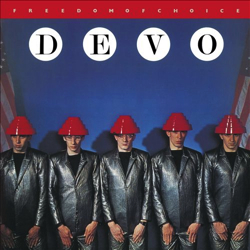 12. Devo: Freedom of Choice (1980)Freedom of Choice marked the beginning of a new era for Devo, almost entirely ditching the raw, post-punk sound of the late ‘70s and embracing and popularizing synth-pop. The album also changed the physical look of the Mothersbaugh-and-Casele group with the emergence of their strange, red plastic hats. Those “energy domes,” as they called them, made Devo a prime example of classic ‘80s culture. Freedom of Choice is a treasure of propelling bass lines and revolutionary synths seasoned with tongue-in-cheek lyrical delivery, blazing the electronic trail for many musicians to come.—Annie Black
12. Devo: Freedom of Choice (1980)Freedom of Choice marked the beginning of a new era for Devo, almost entirely ditching the raw, post-punk sound of the late ‘70s and embracing and popularizing synth-pop. The album also changed the physical look of the Mothersbaugh-and-Casele group with the emergence of their strange, red plastic hats. Those “energy domes,” as they called them, made Devo a prime example of classic ‘80s culture. Freedom of Choice is a treasure of propelling bass lines and revolutionary synths seasoned with tongue-in-cheek lyrical delivery, blazing the electronic trail for many musicians to come.—Annie Black
 11. Nick Lowe: Jesus of Cool (1978)After spending the first half of the ’70s fronting underrated roots-rock band Brinsley Schwarz, Nick Lowe morphed into a superhero at the dawn of punk and New Wave. Along with producing memorable LPs for The Damned, Graham Parker & the Rumour and Elvis Costello, “Basher” (as his mates called him) co-founded archetypal indie label Stiff, for which he threw together his first solo album, joined by members of The Rumour, Ian Dury’s Blockheads, The Attractions and Rockpile (the hotshot combo he started with Dave Edmunds). Exhilarating (“So It Goes,” “Heart Of The City”), cutting-edge (“I Love The Sound Of Breaking Glass,” “36 Inches High”), retro (“Little Hitler”), playful (“Shake And Pop”), cynical (“Music For Money”) and picaresque (“Marie Provost”—who had the misfortune of becoming her own “doggie’s dinner”), Jesus of Cool filters the hopped-up energy of 1977 London through Lowe’s quirky genius, and its neon immediacy is undimmed after more than 30 years.—Bud Scoppa
11. Nick Lowe: Jesus of Cool (1978)After spending the first half of the ’70s fronting underrated roots-rock band Brinsley Schwarz, Nick Lowe morphed into a superhero at the dawn of punk and New Wave. Along with producing memorable LPs for The Damned, Graham Parker & the Rumour and Elvis Costello, “Basher” (as his mates called him) co-founded archetypal indie label Stiff, for which he threw together his first solo album, joined by members of The Rumour, Ian Dury’s Blockheads, The Attractions and Rockpile (the hotshot combo he started with Dave Edmunds). Exhilarating (“So It Goes,” “Heart Of The City”), cutting-edge (“I Love The Sound Of Breaking Glass,” “36 Inches High”), retro (“Little Hitler”), playful (“Shake And Pop”), cynical (“Music For Money”) and picaresque (“Marie Provost”—who had the misfortune of becoming her own “doggie’s dinner”), Jesus of Cool filters the hopped-up energy of 1977 London through Lowe’s quirky genius, and its neon immediacy is undimmed after more than 30 years.—Bud Scoppa
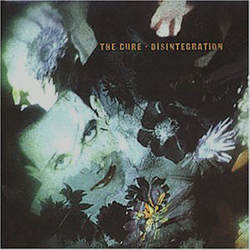 10. The Cure: Disintegration (1989)Disintegration is a return to goth glory after The Cure’s foray into pop with 1987’s Kiss Me, Kiss Me, Kiss Me. It’s lush, mournful and gorgeous—in other words, it’s Robert Smith and company at their very best. From the first notes of “Plainsong” to the somber romance of “Lovesong” and the sweeping “Fascination Street,” the album is emotional but never overwrought. Smith surpasses hokey teen angst, instead creating a lasting work that’s entirely relatable. As the 1980s came to a close, this was the perfect ending to New Wave’s moment in the sun.—Bonnie Stiernberg
10. The Cure: Disintegration (1989)Disintegration is a return to goth glory after The Cure’s foray into pop with 1987’s Kiss Me, Kiss Me, Kiss Me. It’s lush, mournful and gorgeous—in other words, it’s Robert Smith and company at their very best. From the first notes of “Plainsong” to the somber romance of “Lovesong” and the sweeping “Fascination Street,” the album is emotional but never overwrought. Smith surpasses hokey teen angst, instead creating a lasting work that’s entirely relatable. As the 1980s came to a close, this was the perfect ending to New Wave’s moment in the sun.—Bonnie Stiernberg
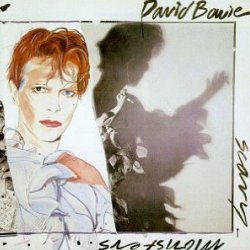 9. David Bowie: Scary Monsters (and Super Creeps) (1980)“There’s a brand new talk,” David Bowie sings on Scary Monsters’s “Fashion,” “but I don’t know its name.” That sense of being slightly disconnected from the punk crowd of the late ’70s and the nascent New Wave scene echoes throughout the album. It’s Bowie trying to figure out exactly where he fits in at that moment in time, and for that reason it’s one of his most underrated albums. While it didn’t produce any massive hits, it did see the return of his Major Tom character on “Ashes to Ashes,” and Bowie manages to work in a dig at the new kids on “Teenage Wildlife”: “A broken-nosed mogul are you/One of the new wave boys/Same old thing in brand new drag.” In short, it’s a legacy artist reminding us that while fads come and go, he’ll always remain relevant, and in that sense, it’s a roaring success.—Bonnie Stiernberg
9. David Bowie: Scary Monsters (and Super Creeps) (1980)“There’s a brand new talk,” David Bowie sings on Scary Monsters’s “Fashion,” “but I don’t know its name.” That sense of being slightly disconnected from the punk crowd of the late ’70s and the nascent New Wave scene echoes throughout the album. It’s Bowie trying to figure out exactly where he fits in at that moment in time, and for that reason it’s one of his most underrated albums. While it didn’t produce any massive hits, it did see the return of his Major Tom character on “Ashes to Ashes,” and Bowie manages to work in a dig at the new kids on “Teenage Wildlife”: “A broken-nosed mogul are you/One of the new wave boys/Same old thing in brand new drag.” In short, it’s a legacy artist reminding us that while fads come and go, he’ll always remain relevant, and in that sense, it’s a roaring success.—Bonnie Stiernberg
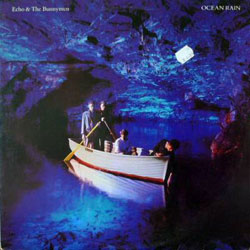 8. Echo & The Bunnymen: Ocean Rain (1984)The introduction of a 35-piece orchestra fortified a new sound for the post-punk Brits on their fourth studio album. Ocean Rain’s expansive string arrangements allowed vocalist Ian McCulloch to sooth his metaphysical melodies into a portrait of lush eroticism. The nine tracks convey a conceptual scale—the initial dark, battering rain morphs into an effervescent sky with sympathetic ease. The result of the ’84 release is a voyage in sonic proportions. Cleverly chaotic, the album capitalizes on the rolling blankets of warmth that soon follow an ocean rain.—Kristen Blanton
8. Echo & The Bunnymen: Ocean Rain (1984)The introduction of a 35-piece orchestra fortified a new sound for the post-punk Brits on their fourth studio album. Ocean Rain’s expansive string arrangements allowed vocalist Ian McCulloch to sooth his metaphysical melodies into a portrait of lush eroticism. The nine tracks convey a conceptual scale—the initial dark, battering rain morphs into an effervescent sky with sympathetic ease. The result of the ’84 release is a voyage in sonic proportions. Cleverly chaotic, the album capitalizes on the rolling blankets of warmth that soon follow an ocean rain.—Kristen Blanton
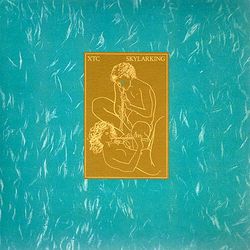 7. XTC: Skylarking (1986)With Skylarking, XTC succeeded in creating an album that sounds squarely out of time. Lush and pastoral, it’s a fully realized psych-pop masterpiece, an oddity among an era of all things synths and synthetics. Thematically the band tackles major life issues like love, marriage and even religion with melodic and lyrical acuity. And between all the sounds of summer splendor and rainy day ballets, they even managed to spawn a surprise hit with atheist anthem “Dear God” in the process. —Jessica Gentile
7. XTC: Skylarking (1986)With Skylarking, XTC succeeded in creating an album that sounds squarely out of time. Lush and pastoral, it’s a fully realized psych-pop masterpiece, an oddity among an era of all things synths and synthetics. Thematically the band tackles major life issues like love, marriage and even religion with melodic and lyrical acuity. And between all the sounds of summer splendor and rainy day ballets, they even managed to spawn a surprise hit with atheist anthem “Dear God” in the process. —Jessica Gentile
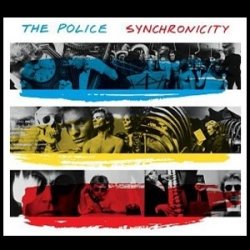 6. The Police: Synchronicity (1983)Most of us who love rhythm and propulsion and striking musical ideas moved on from Sting after his communion with Andy Summers and Stewart Copeland imploded, which makes it easy to forget that Synchronicity was a hell of a way to go. Their disparate sonics coalesced like few other ensembles in 1983, short of non-Western masters like King Sunny Adé’s African Beats, who wasn’t lost on them—“Walking in Your Footsteps” reins in Nigerian polyrhythms just after the opener reestablishes their New Wave bona fides. And just when you can’t take another experiment like Summers’ Freudian horror-laughfest “Mother” or the jazz-a-nova “Miss Gradenko,” they intuitively snap back into 1983’s best pop that wasn’t made by a Jackson: “Synchronicity II,” “Every Breath You Take” and the astronomically delicate “King of Pain.” All one after another.—Dan Weiss
6. The Police: Synchronicity (1983)Most of us who love rhythm and propulsion and striking musical ideas moved on from Sting after his communion with Andy Summers and Stewart Copeland imploded, which makes it easy to forget that Synchronicity was a hell of a way to go. Their disparate sonics coalesced like few other ensembles in 1983, short of non-Western masters like King Sunny Adé’s African Beats, who wasn’t lost on them—“Walking in Your Footsteps” reins in Nigerian polyrhythms just after the opener reestablishes their New Wave bona fides. And just when you can’t take another experiment like Summers’ Freudian horror-laughfest “Mother” or the jazz-a-nova “Miss Gradenko,” they intuitively snap back into 1983’s best pop that wasn’t made by a Jackson: “Synchronicity II,” “Every Breath You Take” and the astronomically delicate “King of Pain.” All one after another.—Dan Weiss
 5. New Order: Power, Corruption & Lies (1983)When Joy Division fell apart with the death of Ian Curtis, the remaining members formed the band New Order and with their second album Power, Corruption and Lies, created a synth-pop album that evolved beyond Joy Division while still being heavily influenced by that band’s trademark sound. Immediately Peter Hook’s bass on album opener “Age of Consent” sounds like JD’s “Transmission,” yet it hides its melancholy deeper down, under the sound of keyboards and bouncy guitars. Power, Corruption and Lies is filled with themes of loneliness, anger and loves lost; it’s easy to see how New Order has influenced everyone from The Smiths to M83. Curtis would have been proud.— Ross Bonaime
5. New Order: Power, Corruption & Lies (1983)When Joy Division fell apart with the death of Ian Curtis, the remaining members formed the band New Order and with their second album Power, Corruption and Lies, created a synth-pop album that evolved beyond Joy Division while still being heavily influenced by that band’s trademark sound. Immediately Peter Hook’s bass on album opener “Age of Consent” sounds like JD’s “Transmission,” yet it hides its melancholy deeper down, under the sound of keyboards and bouncy guitars. Power, Corruption and Lies is filled with themes of loneliness, anger and loves lost; it’s easy to see how New Order has influenced everyone from The Smiths to M83. Curtis would have been proud.— Ross Bonaime
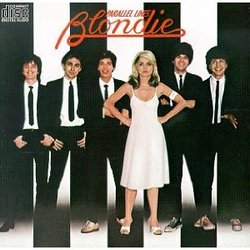 4. Blondie: Parallel Lines (1978)The wondrous pop, rock and disco songs on Parallel Lines weren’t supposed to exist on one single album. To imagine it is to put “The Loco-Motion,” “I Wanna Be Your Dog” and “Staying Alive” on a mixtape and pronounce it a band. Whether pilfered directly from the Nerves (the breathless “Hanging on the Telephone” takes no prisoners) or stitched together, nursery rhyme-like from Buddy Holly’s “Everyday” (few melodies jangle so timelessly as “Sunday Girl” ), Debbie Harry and Chris Stein’s shrewd, sexy melodicism on these 12 classics clawed its way into the pantheon from the simple ambition to conquer any radio format they touched. One way or another, they sneered. We’re gonna please ya please ya please ya please ya.—Dan Weiss
4. Blondie: Parallel Lines (1978)The wondrous pop, rock and disco songs on Parallel Lines weren’t supposed to exist on one single album. To imagine it is to put “The Loco-Motion,” “I Wanna Be Your Dog” and “Staying Alive” on a mixtape and pronounce it a band. Whether pilfered directly from the Nerves (the breathless “Hanging on the Telephone” takes no prisoners) or stitched together, nursery rhyme-like from Buddy Holly’s “Everyday” (few melodies jangle so timelessly as “Sunday Girl” ), Debbie Harry and Chris Stein’s shrewd, sexy melodicism on these 12 classics clawed its way into the pantheon from the simple ambition to conquer any radio format they touched. One way or another, they sneered. We’re gonna please ya please ya please ya please ya.—Dan Weiss
 3. The Smiths: The Queen Is Dead (1986)If “How Soon Is Now” off The Smiths’ previous album was the starting-pistol shot announcing their intentions to delve into darker territories, then the title track off The Queen Is Dead was rhythmic strafing to the same effect. But the devastating melancholia quickly morphs into the sardonic lyrical meglomania that made vocalist Morrissey the legendary apathetic mope in “Frankly Mr. Shankly,” a terse and not-so-veiled reference to The Smiths’ growing distaste for the music industry in general. But what truly makes this definitive album a benchmark is it marks the fall of the insufferable decade of synth music that preceded it and the second coming of the British Invasion with guitarist Johnny Marr’s penchant for high-timbre guitar riffs and sonic urgency such as in “Big Mouth Strikes Again” and “Some Girls are Bigger Than Others.” The two tracks that elevate The Queen Is Dead into the pantheon of truly classic albums are the literary homage “Cemetary Gates” and the ironic swoon of “There Is a Light That Never Goes Out.” Both tracks harness the glorious friction between Morrissey’s incredibly brilliant-but-biting wit and Marr’s desire to simply rock ’n’ roll; a match made in flop-haired heaven.—Jay Sweet
3. The Smiths: The Queen Is Dead (1986)If “How Soon Is Now” off The Smiths’ previous album was the starting-pistol shot announcing their intentions to delve into darker territories, then the title track off The Queen Is Dead was rhythmic strafing to the same effect. But the devastating melancholia quickly morphs into the sardonic lyrical meglomania that made vocalist Morrissey the legendary apathetic mope in “Frankly Mr. Shankly,” a terse and not-so-veiled reference to The Smiths’ growing distaste for the music industry in general. But what truly makes this definitive album a benchmark is it marks the fall of the insufferable decade of synth music that preceded it and the second coming of the British Invasion with guitarist Johnny Marr’s penchant for high-timbre guitar riffs and sonic urgency such as in “Big Mouth Strikes Again” and “Some Girls are Bigger Than Others.” The two tracks that elevate The Queen Is Dead into the pantheon of truly classic albums are the literary homage “Cemetary Gates” and the ironic swoon of “There Is a Light That Never Goes Out.” Both tracks harness the glorious friction between Morrissey’s incredibly brilliant-but-biting wit and Marr’s desire to simply rock ’n’ roll; a match made in flop-haired heaven.—Jay Sweet
 2. Talking Heads: Remain in Light (1980)For their fourth and finest record, the Talking Heads (along with producer/collaborator/all-around musical badass Brian Eno) trotted out their African influences in full force. Polyrhythmic, lyrically cryptic and featuring one of the most awesomely weird guitar solos of all time (Adrien Belew’s blippy genius on “Born Under Punches”), Remain in Light stands as David Byrne and company’s masterpiece. It’s rooted in tradition, yet it sounds delightfully futuristic—even three decades after its initial release.—Bonnie Stiernberg
2. Talking Heads: Remain in Light (1980)For their fourth and finest record, the Talking Heads (along with producer/collaborator/all-around musical badass Brian Eno) trotted out their African influences in full force. Polyrhythmic, lyrically cryptic and featuring one of the most awesomely weird guitar solos of all time (Adrien Belew’s blippy genius on “Born Under Punches”), Remain in Light stands as David Byrne and company’s masterpiece. It’s rooted in tradition, yet it sounds delightfully futuristic—even three decades after its initial release.—Bonnie Stiernberg
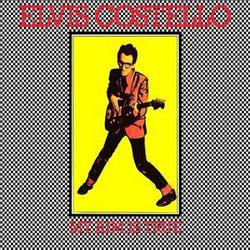 1. Elvis Costello: My Aim is True (1977) Costello’s debut album bridged the gap between the roiling punk energy of the mid-70s and the staid tradition of literate, intimate, popular songwriting that traces from the Gershwins, Berlin and Porter to Buddy Holly and Lennon/McCartney. The record (with the country-tinged ballad, “Alison,” the straight-up rockers “Mystery Dance” and “I’m Not Angry,” the politically charged “Less Than Zero”) only hints at the eclectic breadth and scope of Costello’s future catalog, and it sets the musical and fashion stage for the so-called New Wave. Not Costello’s greatest work, but a landmark, highly influential first album.—Mark Baker
1. Elvis Costello: My Aim is True (1977) Costello’s debut album bridged the gap between the roiling punk energy of the mid-70s and the staid tradition of literate, intimate, popular songwriting that traces from the Gershwins, Berlin and Porter to Buddy Holly and Lennon/McCartney. The record (with the country-tinged ballad, “Alison,” the straight-up rockers “Mystery Dance” and “I’m Not Angry,” the politically charged “Less Than Zero”) only hints at the eclectic breadth and scope of Costello’s future catalog, and it sets the musical and fashion stage for the so-called New Wave. Not Costello’s greatest work, but a landmark, highly influential first album.—Mark Baker
Listen to our Best New Wave playlist on Spotify.







































